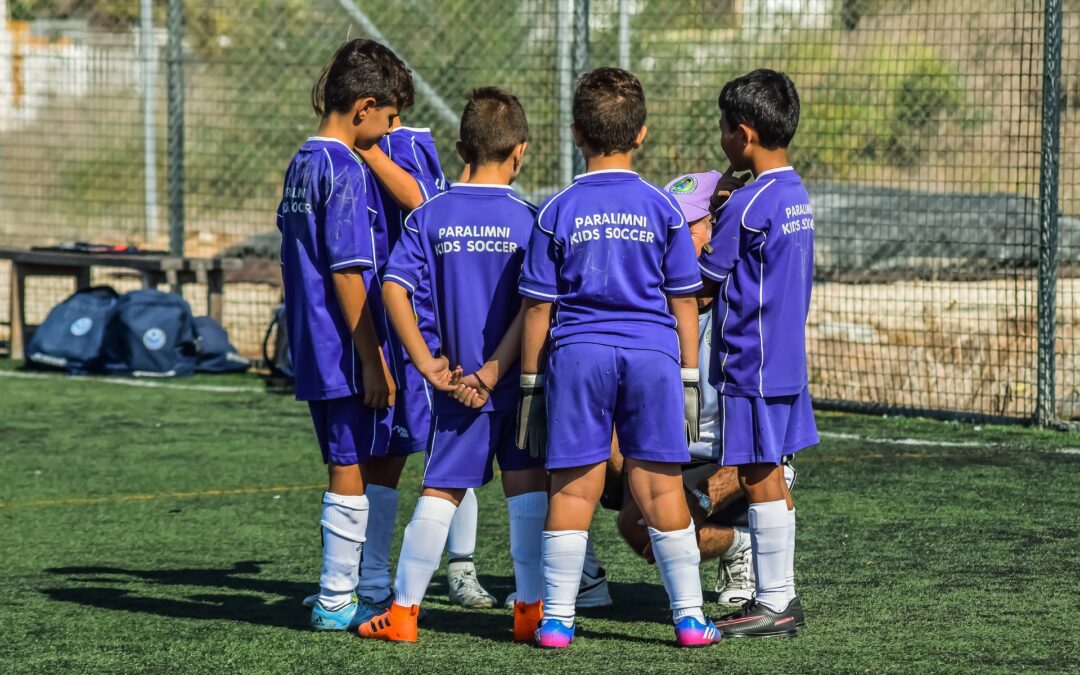The FIFA 11+ Kids Injury Prevention Program Reduces Injury Rates Among Male Children Soccer Players: A Clustered Randomized Controlled Trial.
Al Attar WSA, Bizzini M, Alzahrani H, Alarifi S, Ghulam H, Alyami M, Alzhrani M, Sanders RH. Sports Health. 2022 Jul 28:19417381221109224. doi: 10.1177/19417381221109224. Epub ahead of print. PMID: 35903029.
https://pubmed.ncbi.nlm.nih.gov/35903029/
Take-Home Message
Children playing soccer that performed the FIFA 11+ Kids program suffered less injuries than those who completed the normal warm-up.
Background
Children under 14 years of age sustain nearly 44% of all soccer injuries. Injury prevention warm-up programs could reduce the number of injuries in this population and their future healthcare costs. However, we know little about the effectiveness of these programs in youth soccer.
Study Goal
The authors evaluated the effect of the FIFA 11+ Kids injury prevention program on reducing the incidence of injuries among male Saudi Arabian soccer players aged 7 to 13 years.
Methods
The authors performed a cluster-randomized-control trial to assess the effect of the 11+ Kids program on reducing injuries in 7 to 13-year-old soccer players during 1 season (August 2018-January 2019). The authors sent recruitment letters to 100 male soccer teams (825 athletes) that participated in Saudi Federation of Sports Medicine and the Saudi Soccer Federation soccer teams. In response, 88 teams (740 players) agreed and completed the study. The authors randomized 45 soccer teams into the 11+ Kids program (377 athletes). The 11+ Kids program consisted of a 15-20 minutes warm-up (7 exercises; 5 levels; focused on balance, core stability, and optimization of falling technique) to be completed twice/week in lieu of a regular warm-up. The control group (43 teams, 363 athletes) performed their regular warm-up regimen, which was defined as basic exercises performed before a contest or practice to prepare the player for vigorous physical activity. The authors defined an injury as one that prevented a player from participating completely in the next match or training session.
Results
The soccer players completing the 11+ Kids program experienced ~57% fewer injuries than players performing a traditional warm-up. The benefit of the 11+ Kids program seems to apply to contact, noncontact, and overuse injuries. The authors provide a detailed breakdown of various types of injuries, but many of these had only a few athletes (<5 athletes) with an injury, which makes it challenging to interpret.
Viewpoints
Overall, athletes who completed the 11+ Kids program sustained 57% fewer injuries than the control group, demonstrating the need for prevention programs such as the FIFA 11+ Kids in youth soccer programs. These findings agree with a wealth of research that prevention programs work and can be easily deployed in less than 15 minutes. In this study, the coaches only used the program twice/week and saw benefits, suggesting coaches don’t need to abandon their existing warm-up programs completely. While we often focus on high school and college athletes, it is reassuring to see that these programs work for players in elementary and middle school.
Clinical Implications
Medical professionals should encourage youth coaches to use injury prevention warm-up programs like the FIFA 11+ Kids to reduce injuries incurred at this level and promote positive future health outcomes.
Questions for Discussion
What is the best way to disseminate this information to youth leagues? Does your youth athlete perform a structured warm-up? Do you think this would be easy to implement?
Related Posts
- Injuries = Time AND Money Loss. Why Not Prevent Injuries with the 11+ Kids Program?
- 11+ Kids Program Prevents Severe Injuries
- FIFA 11…(But Really FIFA 11+) Programs Are Effective in Reducing Football (Soccer) Injuries
- An Ounce of Prevention = Money Saved!
- FIFA 11+ Reduces the Risk of Injuries Amongst Soccer Players
- FIFA 11+ Improves Performance and Decreases Injuries in Soccer
Written by: Jane McDevitt
Reviewed by: Jeffrey Driban



I have loved to look further into the research that is being done on reducing injury with warm-up programs. I think this study was done very well and would love to see more information on the numbers needed to harm. In the other research I have seen, I think it is key to see that this number is very low. In my opinion, I think there is no harm in implementing these warm-ups that target these specific categories. I think that coaches are a great person to go through to get information out there and to implement these practices. I do think that these could be easy to implement and incorporate into all sports. The youth athletes that I know, do not participate in a well structured warm-up that target all of these specific areas, it could be very beneficial.